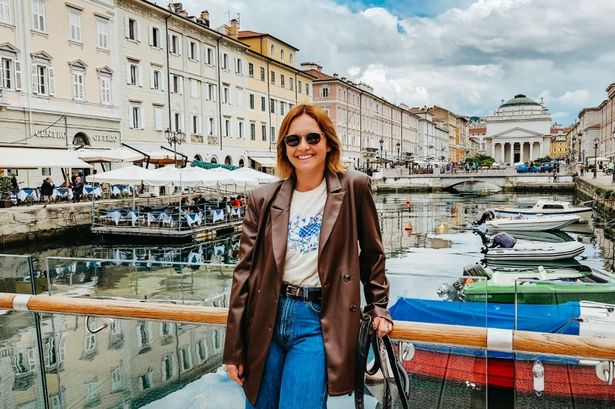Kat Smith, an American who has spent years travelling the world, has highlighted the underrated place that she loves the most and which she keeps coming back to
A seasoned traveller who has visited almost every corner of Italy has chosen an often overlooked one to be her home.
Kat Smith has be travelling the world for the past 13 years, putting down roots for short periods before moving on. The one place that has captured the American globetrotter’s heart, and where she has been living for the past two and a half years, is one that rarely receives much attention from tourists. Although that does seem to be changing.
Trieste saw its overnight stays more than double from around 700,000 in 2021 to 1.5 million in 2024, a significant increase driven by a growing number of tourists visiting the city. That compares to 29 million overnight stays in Rome last year.
“I’ve traveled Italy extensively, going to at least one new place every month since moving here in August 2023. Some cities, like Naples, Rome, and Venice, I’ve found myself returning to again and again, but I always make time to explore a new corner of Italy. I’ve traveled from the southern tip of Puglia to the northern border with Austria, making plenty of stops throughout the country and even to Sardinia,” Kat, co-founder of Mamma Mia Indeed, told the Mirror.
“One of my favorite cities is Trieste. Although still relatively unknown outside of Italy, Trieste is slowly starting to come out of its shell and get the recognition it deserves.”
Here are some of the reasons why she loves the north-eastern coastal city so much.
Do you have a travel story to share? Email webtravel@reachplc.com
It’s unique
“From the architecture to the food and even the local dialect, Trieste is like nowhere else in Italy. Here, you’ll feel closer to Vienna than to Rome when wandering the streets, particularly in the center around Piazza Unità or down grandiose Via Carducci. Sacher cakes sit in bakeries side-by-side with your typical croissants (called “brioche” here), and goulash often accompanies pasta on menus. Given the proximity to the border, road signs tend to be in both Italian and Slovenian, especially true as you explore the hillside surrounding the city center.”
It has a strong sense of identity
“When speaking with locals, especially the older generation, they tend to stress that they’re Triestino first, Italian second, paying homage to those few years after WW2 that Trieste was actually independently recognized as the Free State of Trieste. While not all are itching for those days like some are, they’re proud of their unique culture. A short anecdote to emphasis this unique history comes from my neighbor, a man in his late 70s. All born in the same area we now know as Trieste, his parents were born under the Austro-Hungarian Empire, his parents-in-law in the Kingdom of Italy, him in the Free Territory of Trieste, and his wife in Italy. Although much of Italy shares a unique history and moments in time when it was independent, few have such drastic changes within the last 100 years.”
It’s a city on the water
“Trieste is built around the water, which is something I truly love about living here. Regardless of the season, you’ll find people flocking to the sea or to the coast for the daily ritual of watching the sunset over the Adriatic. It feels as though everyone who lives here is drawn to the water one way or another. Many of our neighbors own sailboats, and friends often call to walk along Barcolana (Trieste’s “beach”) for an aperitivo. We’ve also started rowing most mornings in the sea with a group of locals. The public transportation even stretches past the shore with the ferry being the best way to get around the coastline and even across in the bay in the summer. There’s nothing quite like swapping the bus for a boat, especially once you’ve gotten your first glimpse of Trieste from the water.”
It’s cut off
“Situated on the border with Slovenia, it’s just about as far away from the rest of Italy as you can get, with most towns in Slovenia and even northern Croatia a closer trip. The architecture looks more Austrian than Venetian or Roman, paying homage to the centuries spent as part of the Austro-Hungarian Empire. Today it’s a coastal city bursting with a unique culture and plenty of places to catch the sunset over the Adriatic while you enjoy your aperitivo. In the summer, you can take the public ferry around the coast, visiting smaller towns and seeing the iconic Miramare Castle from the sea. The Osmiza culture comes alive in the summer and spring, with numerous farm-to-table “restaurants” opening their doors with fresh meats, cheeses, and wines. In the winter, the city’s main square, Piazza Unità, gets into the holiday spirit, filling itself with Christmas trees and lights.”
